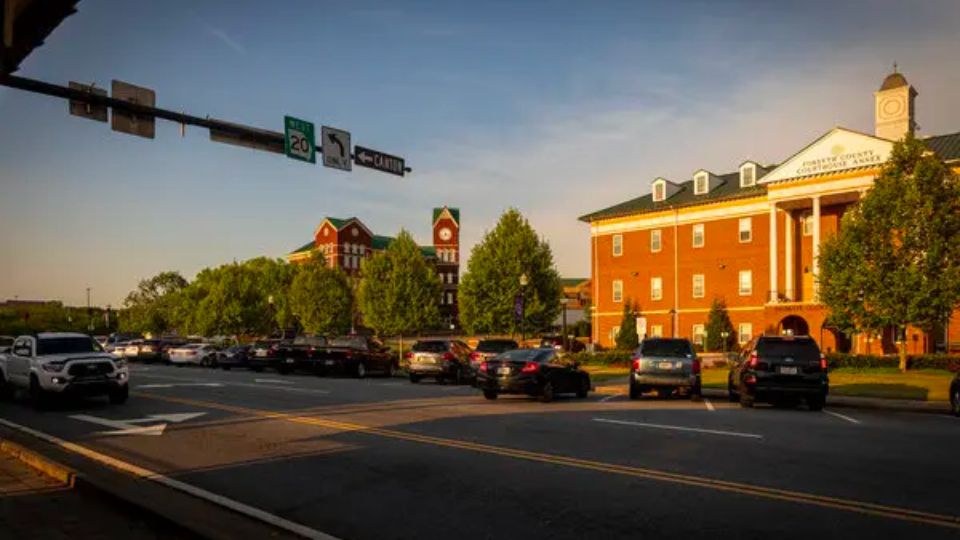In 1912, Forsyth County, Georgia, went through a severe racial cleansing that led to the removal of its Black residents. This event resulted in the county becoming a whites-only enclave for many years, remaining cut off and unchanging. Yet, due to the growth of the Atlanta metro area in recent years, Forsyth County has experienced significant changes, becoming increasingly diverse and successful, which has countered the white supremacist beliefs of its history.
Exploring the Events of 1912 and Their Aftermath
In October 1912, Mae Crow, a white woman, was found raped and beaten in the woods, resulting in a group of white men lynching Rob Edwards, a Black man. After an unfair trial, two Black teenagers, Ernest Knox and Oscar Daniel, were executed by hanging. White men set fire to and looted Black homes and farms, causing about 1,100 Black residents, who made up 10% of the population, to leave Forsyth County within days.
The racial cleansing in Forsyth County was not an isolated incident but rather part of a larger trend of violence and intimidation targeted at Black individuals during the Jim Crow era in the South. Several counties in the area turned into “sundown towns,” where Black individuals were unwelcome after dark and remained all-white for most of the 20th century.
Forsyth County was known for being a prominent example of a sundown town, opposing integration and diversity despite the progress of the civil rights movement. In 1987, a group of civil rights activists planned a march in Forsyth County to demonstrate against its history of racism. Yet, they encountered opposition from a group of white supremacists who hurled rocks, bottles, and racial insults at them. The marchers needed escorts from the police and National Guard.
Also Read: The Most Dangerous Neighborhoods to Live in Cincinnati, Survey Reveals
The Evolution of Forsyth County
In the late 1990s and 2000s, Forsyth County’s reputation for racism and intolerance started to change as the Atlanta metro area expanded. The population skyrocketed from 45,000 in 1990 to 260,000 in 2020, establishing it as one of the most rapidly expanding counties in the nation. This growth led to economic development and social diversity.
Immigrants from Asia, Latin America, Europe, and Africa, with diverse religions, cultures, and backgrounds, moved to Forsyth County. There was a significant shift in the racial and ethnic composition, with the Black population staying at 4.4%, while the Hispanic and Asian populations increased to 12.7% and 11.5%, respectively, by 2020.
The growing variety was linked to enhancements in education, income, and quality of life. Forsyth County has some of the top public schools in the state, with impressive test scores and graduation rates. The median household income of $105,417 exceeds both state and national averages. The county boasts low crime rates, high home values, and plenty of recreational options.
You can clearly see the stark difference between Forsyth County’s past and present. The community that once forced out its Black residents has transformed into a vibrant and diverse area that now draws people from all over the world. An isolated county has now become connected and integrated into the global economy and society. Forsyth County, previously associated with white supremacy, now exemplifies the benefits of diversity and inclusion.



Leave a Reply